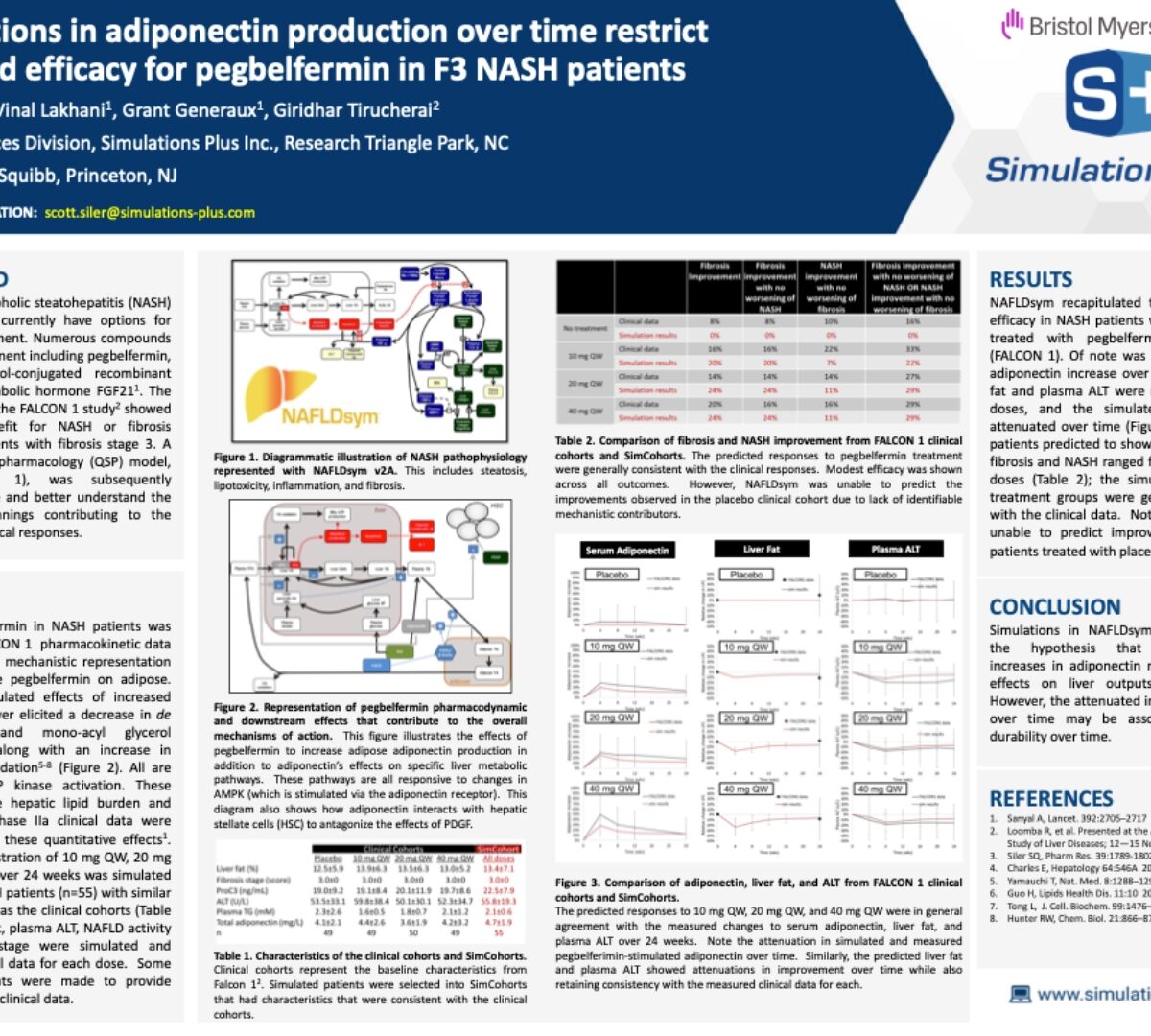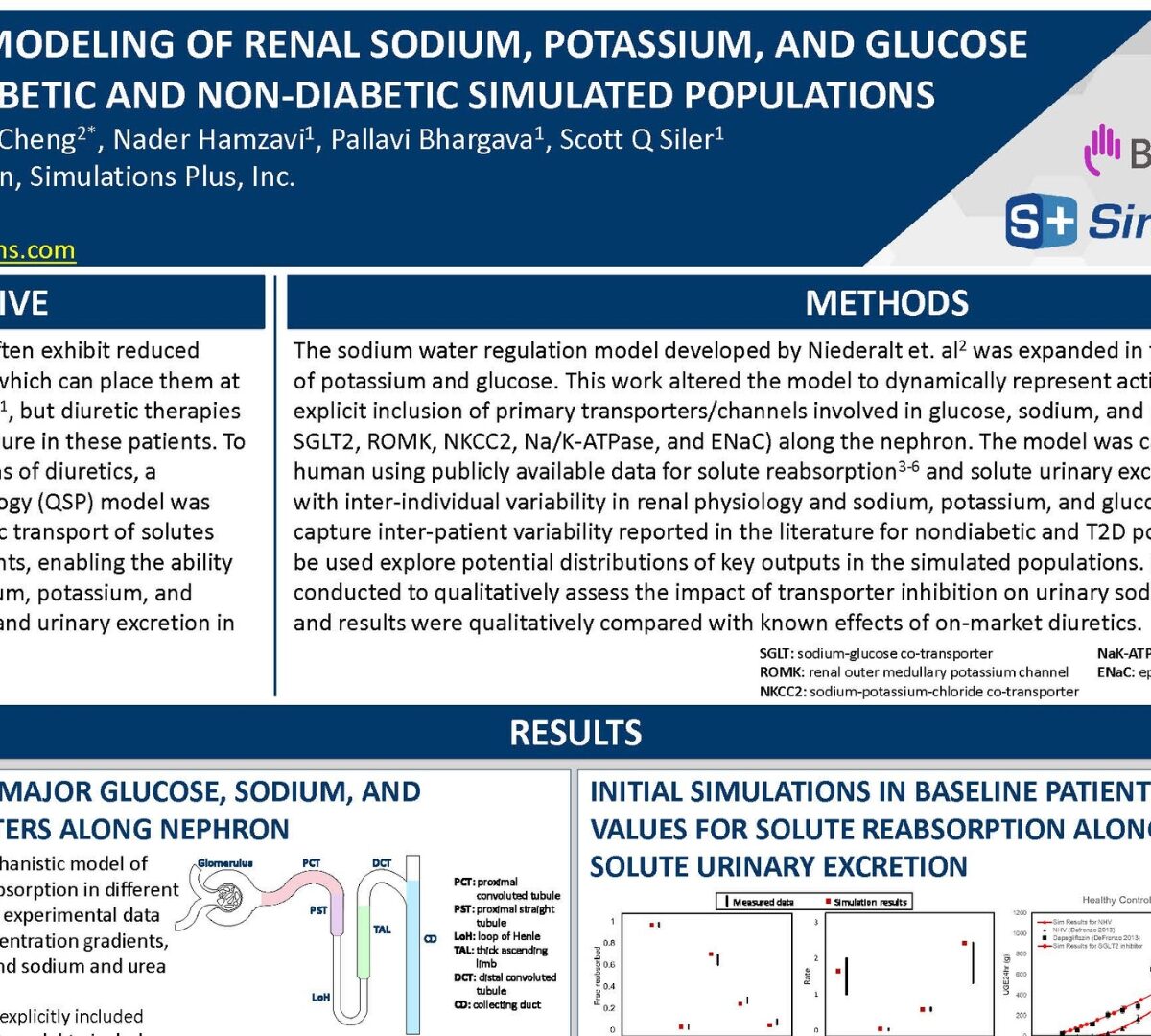In the past decade, only a small number of papers have elaborated on the application of physiologically based pharmacokinetic (PBPK) modeling across different areas.

Best Company for Women Award
Simulations Plus is excited to announce that we are the recipients of a Comparably Award for “Best Company for Women” in 2022.

Pharmacokinetic Basis for Using Saliva Matrine Concentrations as a Clinical Compliance Monitoring in Antitumor B Chemoprevention Trials in Humans
This study reports the first clinical evidence of significantly high secretion of matrine in a multi-component botanical (Antitumor B, ATB) into human saliva from the systemic...

Androgens and androgen receptor signaling in prostate tumorigenesis
Androgens and androgen receptor (AR) signaling are necessary for prostate development and homeostasis. AR signaling also drives the growth of nearly all prostate cancer...

Prediction of Drug Synergism between Peptides and Antineoplastic Drugs Paclitaxel, 5-Fluorouracil, and Doxorubicin Using In Silico Approaches
Chemotherapy is the main treatment for most early-stage cancers; nevertheless, its efficacy is usually limited by drug resistance, toxicity, and tumor heterogeneity.

Non-specific binding of compounds in in vitro metabolism assays: a comparison of microsomal and hepatocyte binding in different species and an assessment of the accuracy of prediction models
Non-specific binding in in vitro metabolism systems leads to an underestimation of the true intrinsic metabolic clearance of compounds being studied.

Simulations Plus Sets Date for First Quarter Fiscal Year 2023 Earnings Release and Conference Call
Conference call to be on Wednesday, January 4, 2023, at 5 p.m. EST

December 2022 GastroPlus Newsletter
Merry Christmas and Happy Holidays!

Effect of starch, cellulose and povidone based superdisintegrants in a QbD-based approach for the development and optimization of Nitazoxanide orodispersible tablets: Physicochemical characterization, compaction behavior and in-silico PBPK modeling of its active metabolite Tizoxanide
The objective of the study was to develop a QbD based orodispersible Nitazoxanide 200 mg tablets its in-silico PBPK modeling. The central composite design was applied...

Model-Informed drug development of gastroretentive release systems for sildenafil citrate
Gastroretentive drug delivery systems (GRDDS) are modified-release dosage forms designed to prolong their residence time in the upper gastrointestinal tract...

Using mechanistic models to support development of complex generic drug products: European Medicines Agency perspective
Model‐informed drug development (MIDD) approaches receive wide regulatory acceptance in the European Medicines Agency (EMA) to support new drug development.

Attenuations in adiponectin production over time restrict simulated efficacy for pegbelfermin in F3 NASH patients
Patients with non-alcoholic steatohepatitis (NASH) and fibrosis do not currently have options for...

Greater efficacy predicted for FGR1/beta-klotho receptor agonists that achieve 60% or greater increases in serum adiponectin
The FGFR1/beta-klotho receptor (FGFR1/KLB) in adipose has been demonstrated to be a...

Reduction of daily moderate alcohol intake predicted to decrease fibrosis stage in patients with non-alcholic steatohepatitis
Several recently completed clinical trials in NASH patients have included fibrosis stage reductions in...

Impact of chemical structure on the in vitro hydrolysis of fatty esters of 2-ethylhexanoic acid or 2-ethylhexanol and extrapolation to the in vivo situation
Fatty esters of 2-ethylhexanoic acid (EHA) and 2-ethylhexanol (EH) are commonly used in cosmetics. Human liver and skin S9 and human plasma were used to determine the...

Mathematical Representation of Drug-Induced Crystal Nephropathy Using a Quantitative Systems Toxicology Approach
Drugs may cause crystal nephropathy by precipitating within kidney tubules or inducing...

Formulation development and optimization of taste-masked azithromycin oral suspension with ion exchange resins: Bioanalytical method development and validation, in vivo bioequivalence study, and in-silico PBPK modeling for the paediatric population
The study is based on preparing taste-masked oral suspension of azithromycin using ion exchange resins Kyron T135 and Doshion-P542 AB. The complexation...

Mathematical Modeling of Renal Sodium, Potassium, and Glucose Dynamics in Diabetic and Non-Diabetic Simulated Populations
Type 2 diabetic (T2D) patients often exhibit reduced systolic and diastolic functions, which can place them at...

Representation of Fibrosis Stage Within Mechanistic Model of Non-Alcoholic Fatty Liver Disease (NAFLD)/Non-Alchoholic Steatohepatitis (NASH) Aligns with Histologic Assessments
NAFLD encompasses a histological spectrum of liver pathophysiology ranging from steatosis to NASH and may result in cirrhosis and ultimately liver failure. A reduction in fibrosis stage, which...
